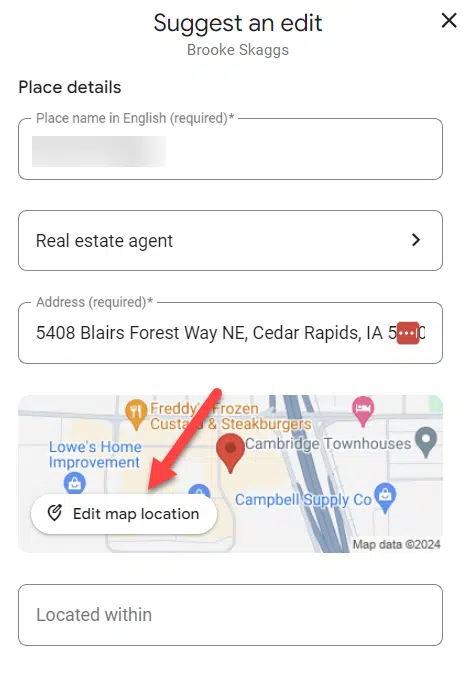If you’ve just dipped your toes in the world of search engine optimization (SEO), one of the first terms you have probably come across is “link building”. A powerful tool to boost search engine rankings, it is the backbone of any successful SEO strategy.
But why is link building so crucial for SEO and what types of link building exist? Let’s answer these questions and dive deeper into the advanced techniques that can help ramp up your link-building strategy.
The Importance of Link Building for SEO
Backlinks are considered powerful endorsements in the “eyes” of search engines. But why is this the case? Well, search engines view backlinks as a form of “online reputation”.
When a high authority website links to your site, it’s like receiving a seal of approval from a reputable source. For search engines, in turn, this serves as an indicator that your website has great content that is worth showing to users.
However, not all backlinks are created equal. You can get hundreds of links, but if they come from irrelevant sources, it will have little effect on your rankings. The goal of a link builder is to team up with websites that have a domain authority of at least 50 and are relevant to your industry, which is the hardest part.
Building relationships with partners takes a lot of effort and time. Not surprisingly, many startups find it easier to outsource this work to remote teams that are well-versed in all aspects of link building. If you’re still two minds about what to do, make sure to check out the benefits of outsourcing featured on Searchengineland.com to set yourself on the right path.
Now to the question of why link building is so important for SEO. Let’s take a look at its key benefits.
Improved Visibility
First and foremost, link building allows you to improve your rankings on Google. In fact, without links, you have no chance of getting on the first page of search engine results, no matter how great your content is, which makes backlinks an integral part of SEO.
When search engines crawl websites, they analyze the quantity and quality of their backlinks. As you can guess, those that have a stronger backlink profile stand out as being more relevant and authoritative.
Increased Organic Traffic
Another benefit of link building is that it allows you to attract a steady flow of organic traffic. Websites that pop up on the first page capture 71% of all clicks, and if you can get to the top, you have a higher chance of attracting a significant amount of organic traffic.
Also, when you get other websites to share links to your content, you are more likely to generate relevant leads who will be interested in your products or services, resulting in higher conversions and business growth.
Enhanced Website Authority
Backlinks not only improve your rankings but also increase your domain authority. With more sources linking to your content, your website gains credibility in the eyes of search engines and can very soon become a leader in the niche. That, in turn, can lead to more conversions and sales, which is the real goal of any link-building effort.
Better Indexing and Crawling Frequency
It’s also worth noting that websites with more backlinks tend to get indexed much faster. Search engine bots follow links from one webpage to another to discover new content. Naturally, if your website has a substantial number of backlinks, it increases the chances of bots finding and crawling your pages more frequently.
With faster indexing, your new or updated content can be included in search results more promptly. This means that when you post a fresh blog or make changes to existing pages, Google algorithms are more likely to discover and index those changes faster.
As a result, you can significantly reduce the turnaround time for your SEO efforts, ensuring that your latest content is readily available to users in search results. And seeing how competitive the world of SEO is, being first can be a game changer.
Types of Link Building in SEO
Now that you know how important link building is for SEO, you shouldn’t have any doubts about investing in this strategy. But what type of link building is the most efficient for SEO? And how many of them should be used?
Let’s dive deeper into the existing techniques. Understanding their strengths will help you make the most out of your link-building strategy and ensure you fortify your website on all proverbial flanks.
Editorial Link Building
Editorial link building is a fundamental aspect of SEO that focuses on earning natural and organic backlinks from authoritative sources. Unlike other forms of link building that involve actively seeking out link opportunities, editorial links are acquired when other website owners and bloggers naturally reference and link to your content based on its quality and value.
So, why are editorial links important for SEO? There are a number of reasons.
First, editorial links help websites build authority and trust. Since they appear organically based on the quality of your content, they serve as a vote of confidence for Google, indicating that your website is a trusted source of information and deserves to be shared with web surfers. This helps boost your DR and increases the chances of landing on the first page of search results.
Secondly, when you get on top of SERPs, you can also expect an increase in traffic. However, with editorial links, this traffic will be more targeted, drawing in audiences genuinely interested in your content and helping you increase conversions.
Furthermore, editorial links, while hard to achieve, entail no additional costs, making editorial link building a sound option for smaller companies working on tight budgets.
As an added bonus, editorial link building is a great way to build relationships with other webmasters from your niche. Even though this approach doesn’t imply reaching out to websites with requests for backlinks, you can still get in touch with publications that mention you, thus expanding your network of partners.
Manual Outreach Link Building
If you want to take a proactive approach to link building, manual outreach is your go-to strategy. Unlike editorial link building, manual outreach, as the name suggests, encourages link builders to reach out to other website owners, bloggers, and influencers and request to link to their content.
Manual outreach linking is indeed a time-consuming process. Quite often, it can take months before you notice any results. However, if you stay committed, the outcome can far exceed your expectations, securing your valuable link placements.
To achieve success in manual outreach link building, it’s important to have a well-defined strategy in place. Resist the urge to get links from any random websites. Instead, identify authoritative websites, blogs, and journalists that align with your niche and have a strong online presence and relevant content.
Once you have a list of websites that you’d like to link back to your source, you can send your requests to webmasters. This can be done in any convenient way, from social media and emails to a quick comment under their blog posts, whichever proves effective.
Broken Link Building
Every ocean has its fair share of broken treasures, and the same goes for the vast web of the Internet. You’d be surprised but even some of the largest publications with high DAs don’t always vet their websites for broken links, giving link builders a great opportunity to take advantage of it.
As you’ve guessed, broken link building involves finding broken links on other websites and suggesting your own content as a replacement. Start by identifying websites in your niche that have broken links. Tools like Check My Links and Dead Link Checker can help you with this task.
Once you find broken links, you can reach out to their website owners, offering them to replace their outdated content with your content. If you provide a good enough explanation of why your content can be a valuable alternative, they’d be more than happy to replace it and fix broken links.
Using this approach, link builders can get links from the most authoritative websites like Forbes and The New York Times without paying a dime.
Advanced Link Building Techniques
When exploring the realm of link building, it’s essential to delve into some advanced techniques that can take your strategy to the next level. These advanced techniques go beyond the basics and provide additional opportunities to enhance your website’s authority and visibility.
Let’s take a look at a few of these link-building approaches.
Skyscraper Technique
In the vast sea of content, standing tall like a towering skyscraper can set you apart. The skyscraper technique implies just that. There is tons of impressive content out there, but, as everyone knows, perfection has no limits. If you can create content that surpasses existing resources in your niche, you can stand out from the curve.
To implement the skyscraper technique, start by identifying popular content in your industry. Then, analyze it, find ways to make it even better, and create your improved version. Promote your content to influencers and website owners who might find it valuable, increasing the chances of them linking to your resource.
Influencer Outreach
Forging relationships with influencers can work wonders for your link-building efforts given the popularity of influence marketing. The challenge lies in getting them to share your content on their networks.
To succeed in influencer outreach, ensure you have a genuine interest in their work. Rather than making requests from the get-go, take the time to engage with their content and share their posts. Once you build a relationship, craft personalized and compelling outreach messages, highlighting how linking to your content would benefit their audience.
Of course, this doesn’t secure links, but if you convince them that your content offers value, you can significantly increase your chances of gaining their support.
Link Baiting
Link baiting is another technique that allows you to bait the right fish. The goal of this approach is to create compelling content that is so interesting that people can’t help but link to it (hence, the technique name).
The beauty of link baiting is that it can take any form, including:
- In-depth guides,
- Statistics-driven articles,
- Infographics,
- Videos,
- Controversial content,
- Banners, and many more.
The key to successful link baiting is to make your content stand out from the competition. Offer something truly remarkable, whether it’s through the depth of information, visual appeal, or the innovative approach you take.
Once you’ve created your link bait content, you’ll need to bring it to the attention of readers, which can be done through promotion on social media platforms where people are highly active and engaged.
Summary
To bring it to an end, link building is a fundamental aspect of SEO that can significantly impact your website’s visibility and rankings. Without a solid link-building strategy, it can be challenging to complete in the ever-evolving landscape of search engine optimization.
Now, which type and technique are the most effective? As you’ve already guessed, there’s no such answer. Link building isn’t a one-fits-all solution, and each of the techniques has its own strengths and can yield positive results when implemented correctly. The key is to understand your website’s needs and objectives.
Some link builders stick to one type of link building, while others customize their strategies by combining several techniques. However, if you want to succeed, it’s better to take a diversified approach.




